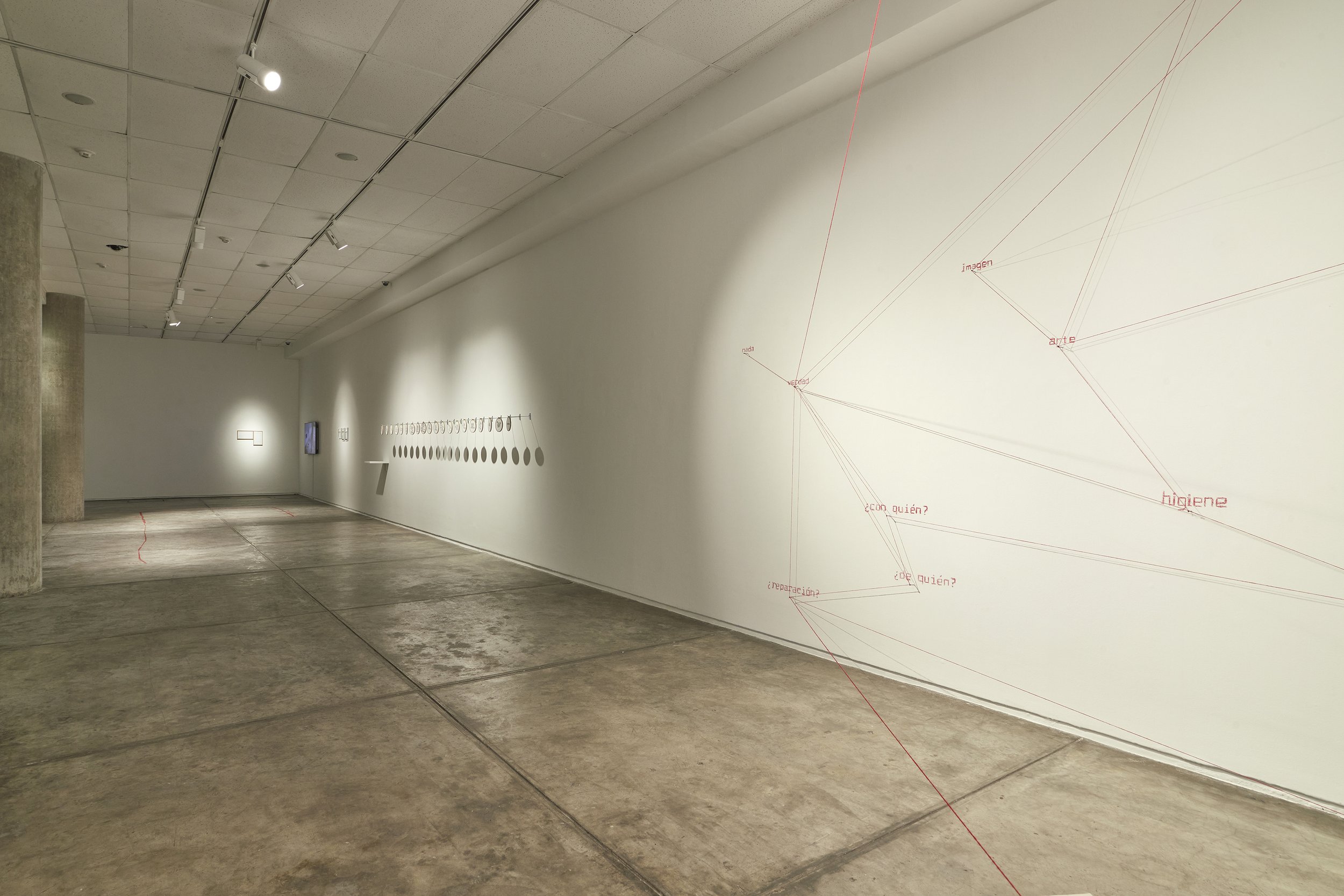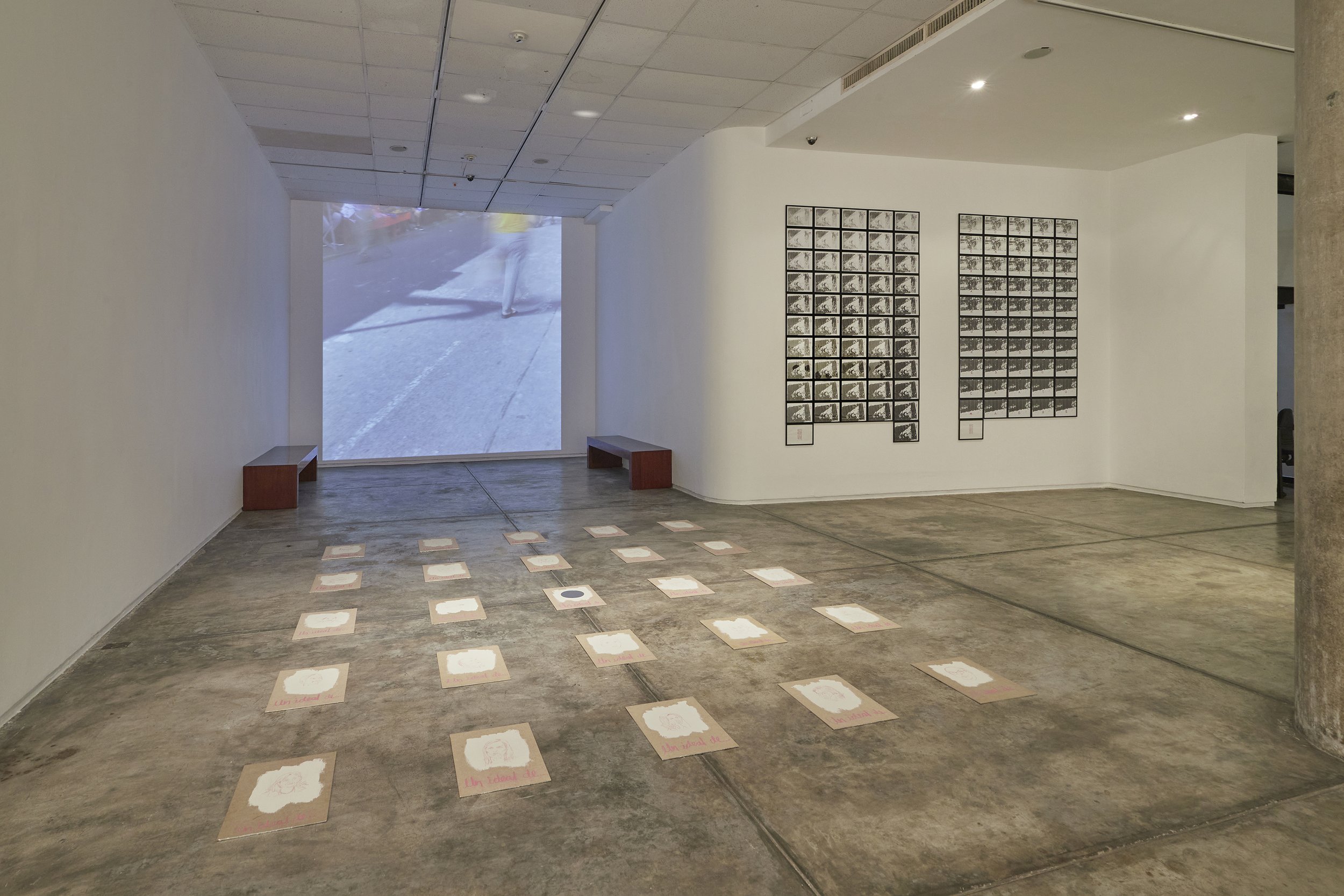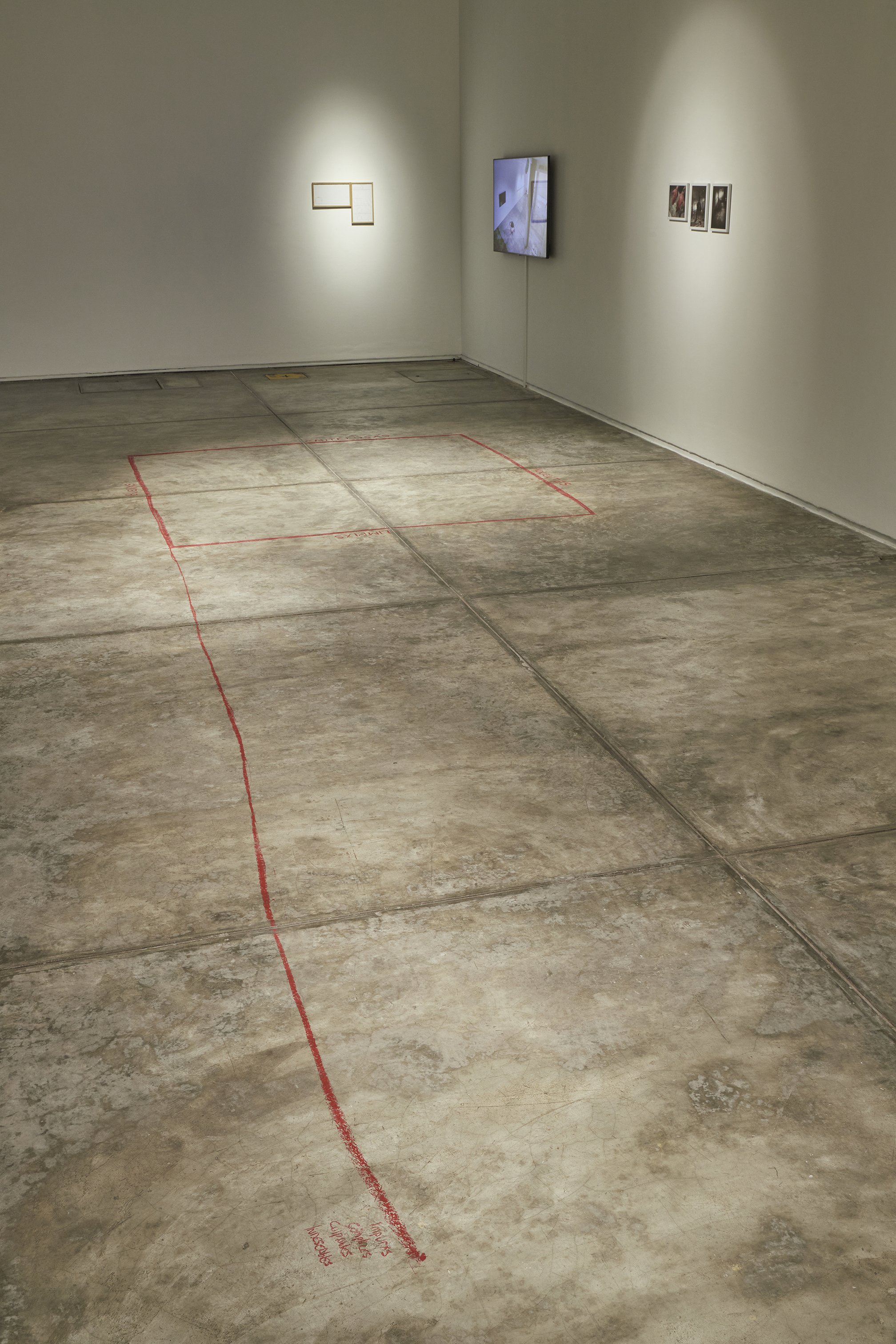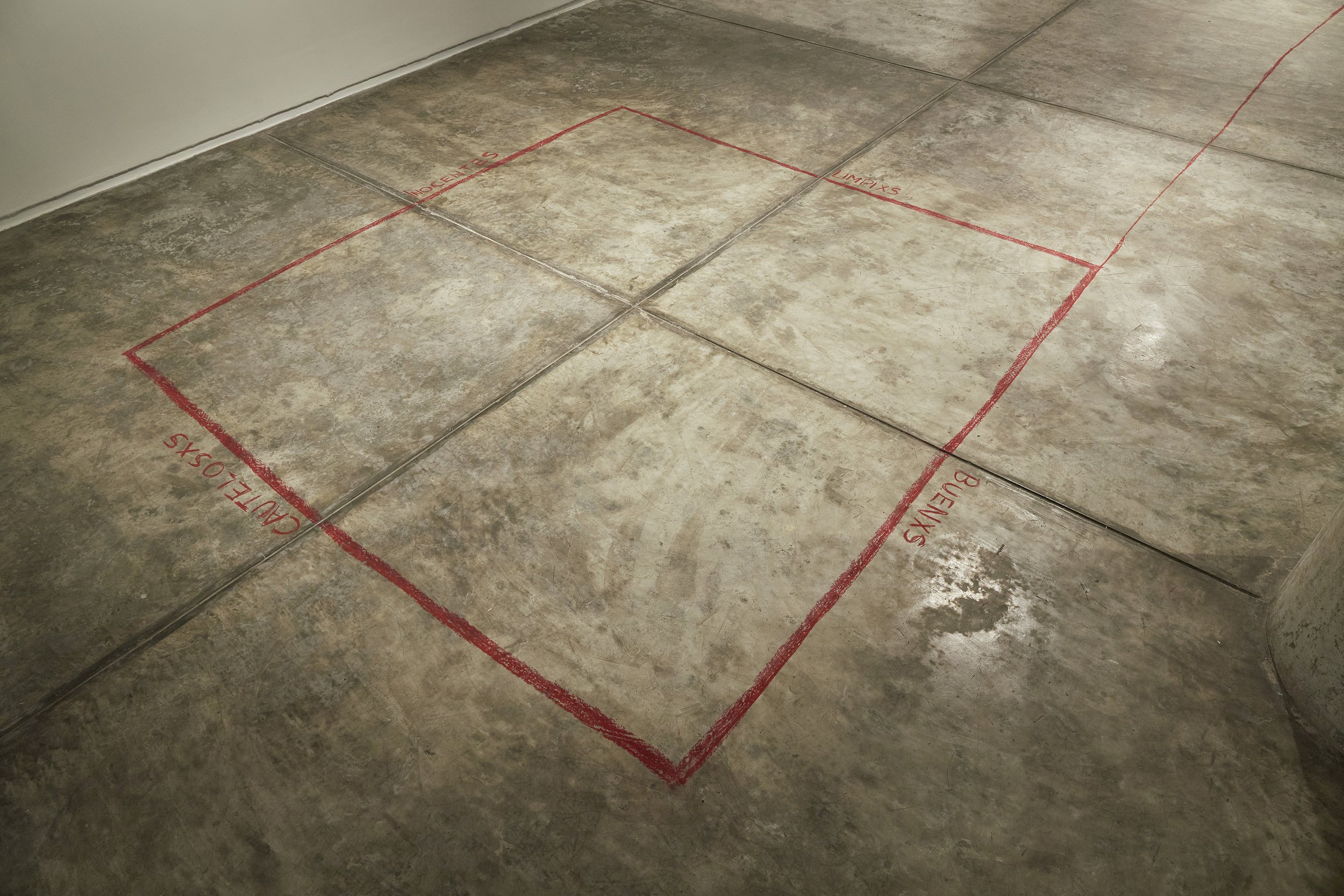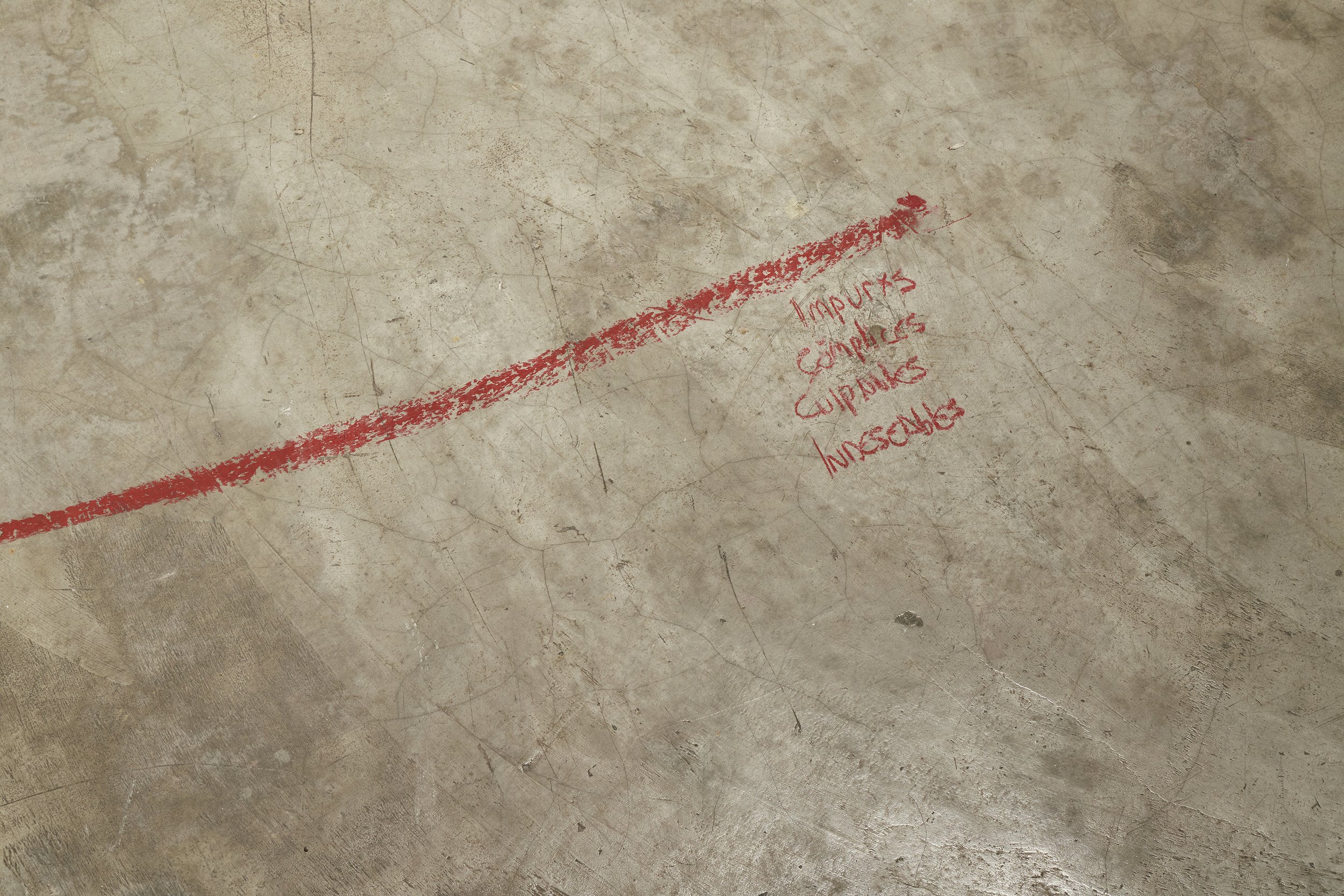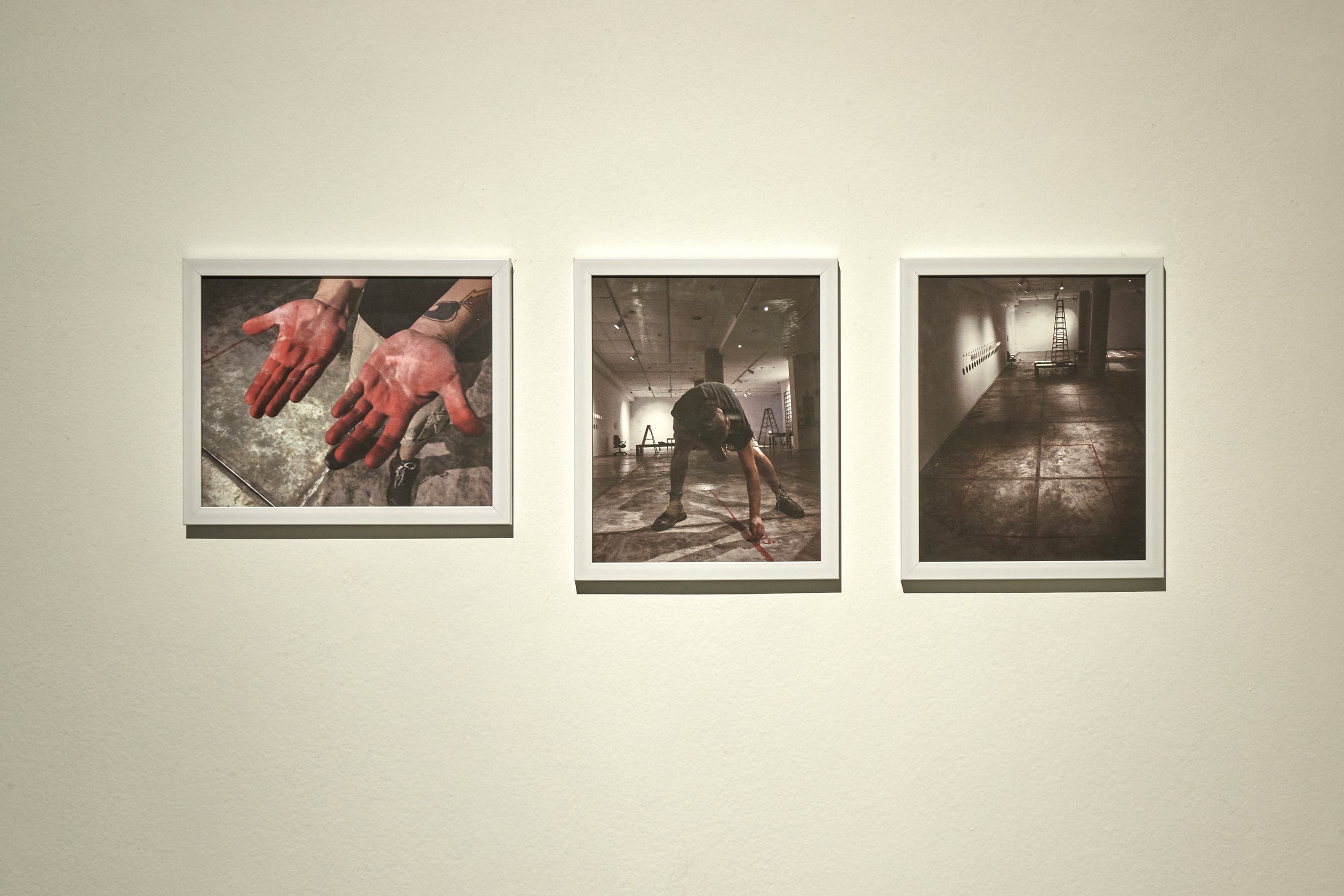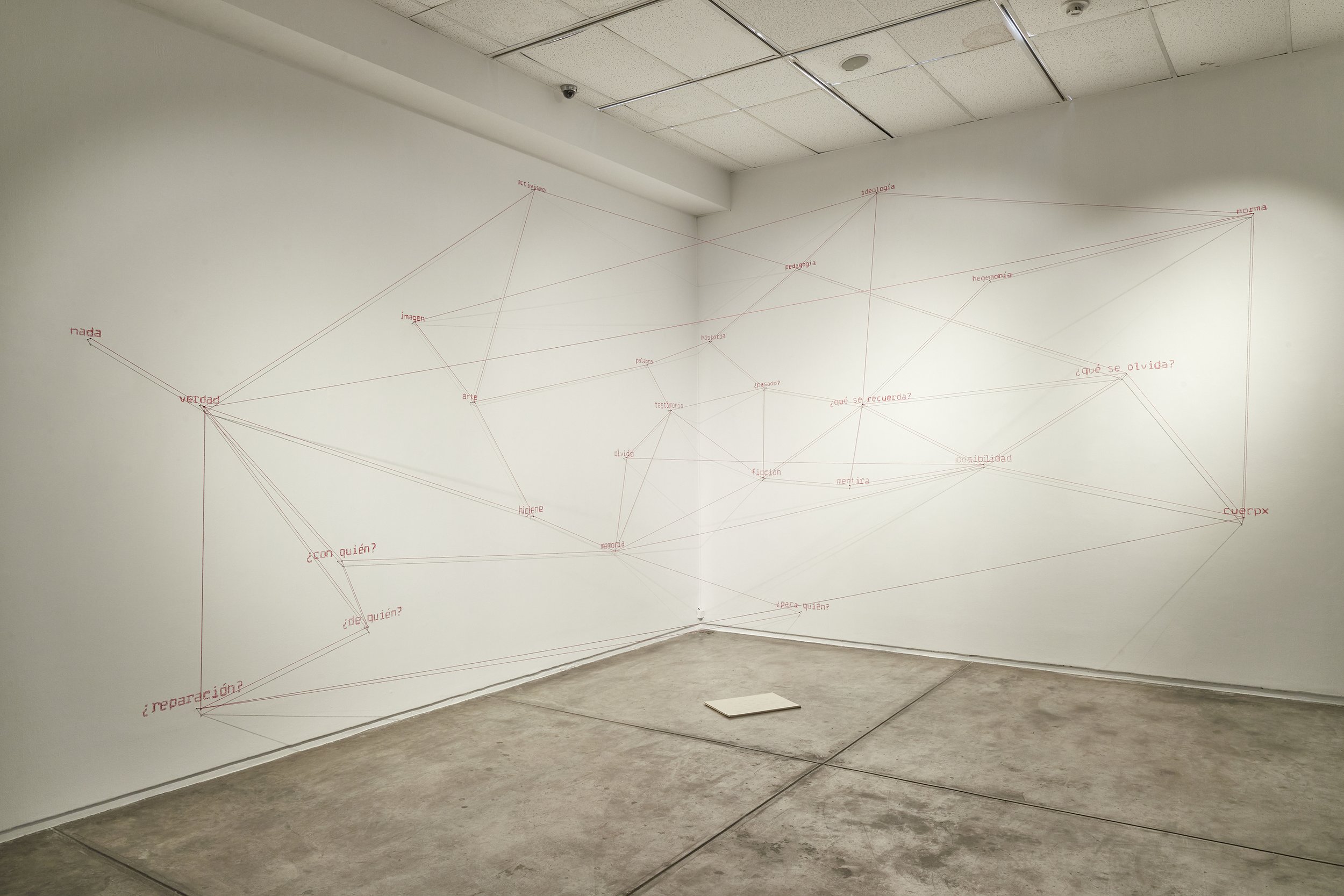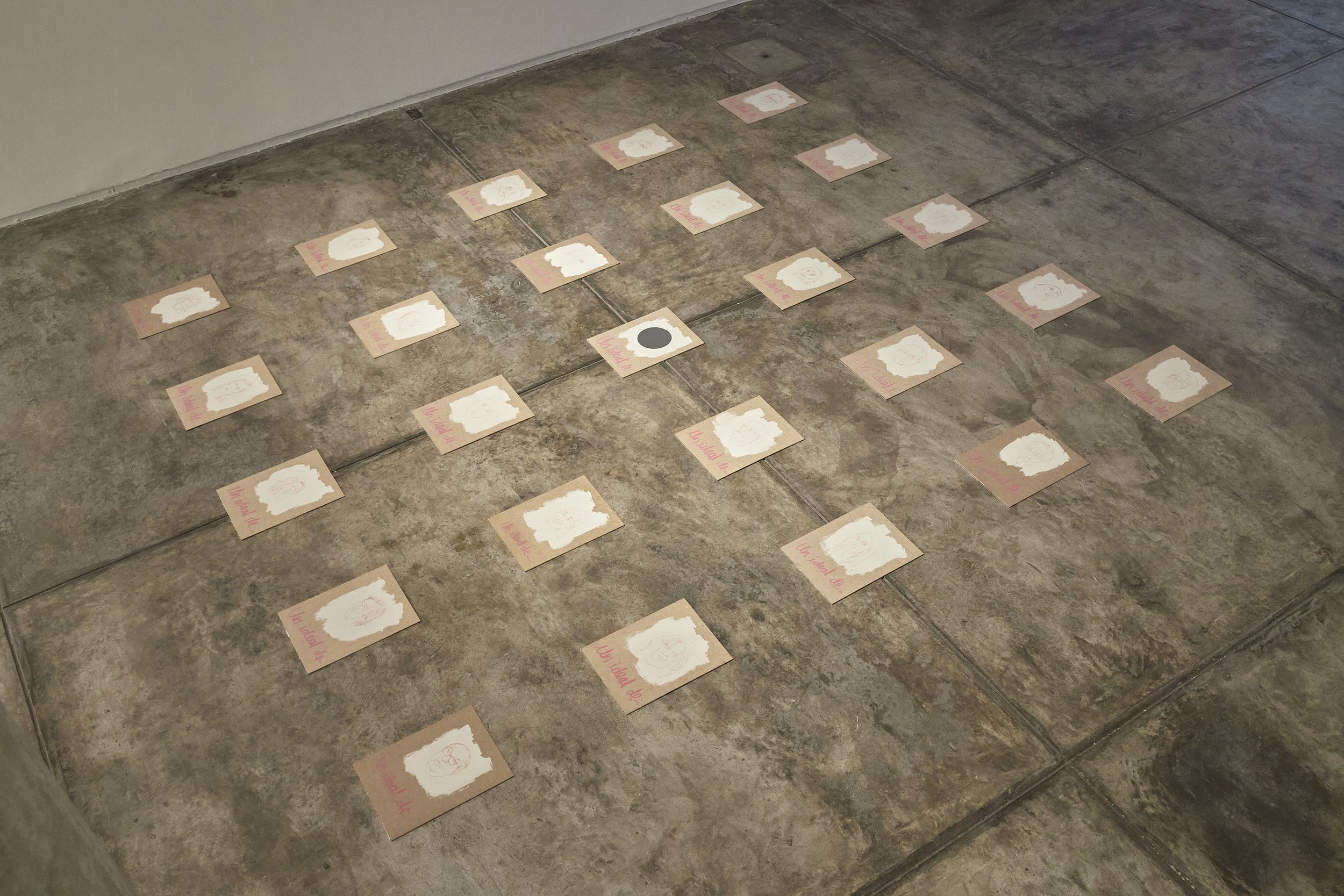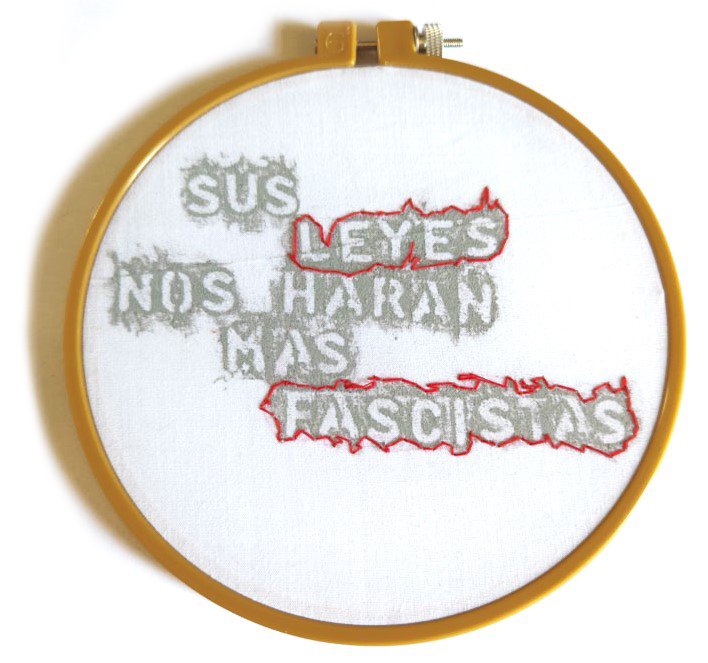(Sin) cuerpo público
Texto: Carlos Zevallos Trigoso
Fotos: Juan Pablo Murrugarra
La exhibición “(sin) Cuerpo Público” de Isaac Ernesto (Lima, 1992) surge como un proyecto de arte crítico que busca abrir un espacio colectivo donde se pueda problematizar las culturas políticas de nuestra sociedad a partir de ensayos artísticos que, desde los lenguajes del arte conceptual, plantean al espectador ciertas tensiones sobre el lugar del sujeto contemporáneo en la formación de lo que llaman una “ética ciudadana”. A partir de un conjunto de proyectos, seis en total, donde se utilizan prácticas procesuales, performativas, apropiacionistas y participativas; la totalidad de la exposición nos convoca a ingresar en una experiencia reflexiva y afectiva compleja.
Estos proyectos exploran diversas temáticas: las comunidades afectivas y sus intercambios discursivos (“Hincar (Cuaderno de campo)”), la racionalidad política de los ideales (“Un ideal de…”), las lógicas de expulsión de la cultura cívica (“Pisar aquí”), el imaginario colectivo como construcción social (“Esto no tiene nombre (Sin título I)” y “Esto no tiene nombre (Sin título II)”, los límites de la representación política (““Fronteras lingüísticas para una ciudadanía deseable - Lima, San Miguel, 2023”) y lo común, concepto que se abordará a través de una intervención sobre el espacio de la sala de exhibición y donde se convoca a los públicos a participar (“Mapa manifiesto”). Cada uno de ellos se trabaja a partir de materiales comunes, mundanos y cercanos; ofreciendo también un comentario sobre los límites de la distinción entre lo artístico y lo no artístico.
Cada propuesta de esta exhibición nace con una vocación contra- pedagógica; es decir, no buscan transmitir información, aprendizajes o revelaciones. En cambio retan al público a sentir y pensar; a traer lo suyo y a reconocer en la propuesta lo que pueda y quiera. Todo esto emerge de una historia y experiencias particulares, relacionadas al trabajo artístico previo de Isaac Ernesto donde desde el testimonio y la auto-biografía, ha removido constantemente los cimientos de su propia vida. De esta forma, la exhibición arroja una pregunta al público asistente sobre la estabilidad y coherencia de los relatos cívicos que, para él, han sido una y otra vez procesos que lo expulsan de lo público.
Este espacio funciona también para pensar críticamente en toda normatividad, y en cómo sin un lugar común donde se expongan sus fracturas estamos perdidos. Así, aunque no veremos un relato optimista sobre el arte como herramienta de cambio social, sí subyace a la muestra un reconocimiento sobre lo político en lo estético y al revés. Cabe recordar que la muestra ocurre embebida en un nuevo ciclo de movilización social y crisis política que, inevitablemente, entrará al espacio de la mano del artista y sus espectadores; razón por la que la propuesta se sentirá cargada de su coyuntura.
Proyectos que componen la muestra
qui potest capere capiat -a modo de prólogo-
Fronteras lingüísticas para una ciudadanía deseable (lo demás mejor ni verlo)
Hincar (cuaderno de campo) - Colección privada (2 piezas)
Mapa/manifiesto
Pisar aquí
Sin título (esto no tiene nombre I y II) - Colección ICPNA
Un ideal de…
Exhibiciones
ICPNA, Lima (2023)
(Without) Public Body
Text: Carlos Zevallos Trigoso
Photos: Juan Pablo Murrugarra
The exhibition "(Without) Public Body" by Isaac Ernesto (Lima, 1992) emerges as a project of critical art that seeks to open a collective space in which the political cultures of our society can be problematized through artistic essays. Using the languages of conceptual art, the exhibition presents the viewer with tensions around the place of the contemporary subject in the construction of what is referred to as a "civic ethics." Through a set of six projects that employ process-based, performative, appropriationist, and participatory practices, the exhibition as a whole invites us into a complex affective and reflective experience.
These projects explore a range of themes: affective communities and their discursive exchanges (Hincar [Field Notebook]), the political rationality of ideals (An Ideal of...), the logic of expulsion within civic culture (Step Here), the collective imaginary as social construction (This Has No Name [Untitled I] and This Has No Name [Untitled II]), the limits of political representation (Linguistic Borders for a Desirable Citizenship – Lima, San Miguel, 2023), and the notion of the commons, which is approached through an intervention in the exhibition space itself, where the audience is invited to participate (Manifesto Map). Each of these works is developed using ordinary, everyday materials, offering a commentary on the boundaries between what is considered artistic and non-artistic.
Each proposal in this exhibition is born from a counter-pedagogical intention; that is, they do not aim to transmit information, lessons, or revelations. Instead, they challenge the public to feel and think, to bring their own experience into the encounter and to recognize what they can or want to in each proposal. All of this emerges from a particular history and set of experiences, rooted in Isaac Ernesto’s previous artistic work, which has consistently unsettled the foundations of his own life through testimony and autobiography. In this way, the exhibition poses a question to the audience about the stability and coherence of civic narratives which, for the artist, have repeatedly functioned as processes that exclude him from the public sphere.
This space also functions as a critical lens through which to examine all forms of normativity, and how, without a shared space to expose its fractures, we are adrift. Thus, while we may not encounter an optimistic narrative about art as a tool for social change, the exhibition does sustain a recognition of the political within the aesthetic—and vice versa. It is worth noting that this exhibition takes place within a new cycle of social mobilization and political crisis, which will inevitably enter the space through both the artist and the spectators—imbuing the project with the urgency of its context.
Projects included in the exhibition
qui potest capere capiat – as a prologue
Linguistic Borders for a Desirable Citizenship (the rest is better left unseen)
Hincar (Field Notebook) – Private Collection (2 pieces)
Map/Manifesto
Step Here
Untitled (This Has No Name I and II) – ICPNA Collection
An Ideal of…
Exhibitions
ICPNA, Lima (2023)

